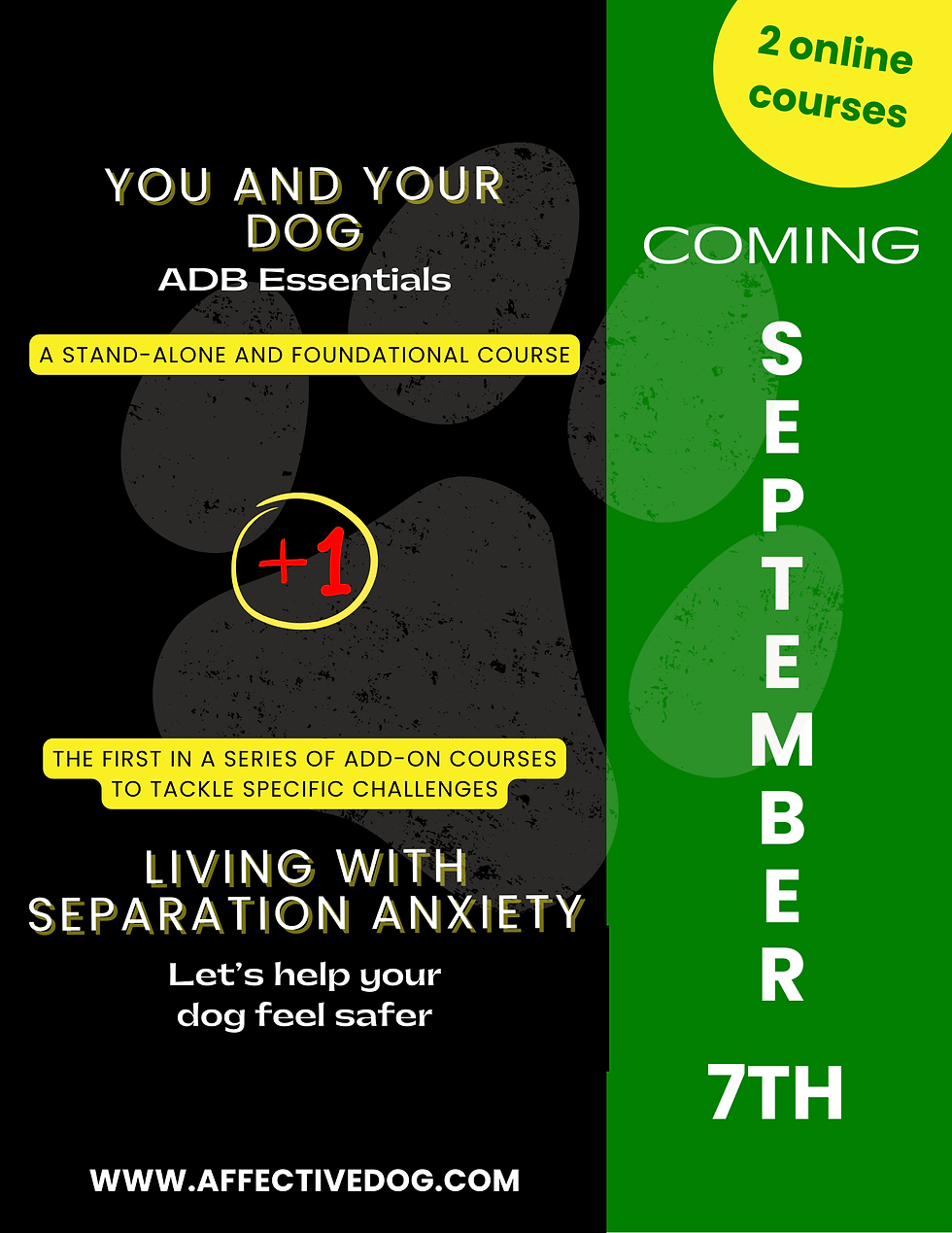Welcome to the Emotional Canine Brain
- affectivedogbehavior

- Mar 6, 2020
- 3 min read
Updated: Aug 18, 2023
Now let’s look at this fun interaction a little closer. While the behaviors you see look like they serve no real purpose, these PLAY behaviors actually have a great impact on not only the kid’s cognitive function, but the dog’s as well. Both mammals are not only making up their own game, but they are learning each other’s social rules as well, which makes them socially more skilled as they go . PLAY is the brain’s way of making learning fun (Jaak Panksepp about PLAY: Mammals have to learn social rules; these rules are not built in genetically, but they have to be acquired by interacting, so PLAY is this powerful system that increases positive interactions). When play is done like this, the brain is lighting up with rewards. It’s actually said that “PLAY lights up the brain like a Christmas tree”. Opioids (amongst some other neuro-chemicals) are released and everyone is stress free. This is Free PLAY. And when you recognize their body language as needing a break, you are recognizing the brain’s signals that the opioids have reached a satisfying level and that rest is needed before inappropriate behaviors happen.
By giving them rest, water and snacks, you are actually taking care of an emotional need, as well as their physical needs for water and food. This is your CARE Emotional System . And their desire to rest with someone that has helped take care of their emotional needs helps them stay in a positive emotional state and not shift into the PANIC/GRIEF System. (Jaak Panksepp on CARE and PANIC/GRIEF: Mammals have developed a CARE system to nurture their offspring, to make sure their young can grow up nicely, while the little ones have to indicate to the parents when they are lost; and they do that through separation distress that triggers certain behaviors … separation distress – the loneliness and pain of being alone – panic attacks emerge from that).
But it doesn’t stop there. See, now kid and dog also feel safe; safe because they feel connected; safe because they know you have their backs. Feeling safe is another innate emotional need that you just helped fulfill. And when you asked why they PLAY in that manner, the kid actually got a chance to express his enjoyment with someone he trusts. Showing interest in their interests, even if what they are interested in makes no sense to you. They are still learning. Learning that they feel cared for and they have someone who CAREs. Someone that will listen. Someone they can turn to.
And that’s the reason why you feel validated and acknowledged when they rest upon you and are sharing their weird behaviors. Because everyone is bonding through innate primary social emotional systems without thinking. It just happens because it makes all participants feel good. You are fulfilling the brain’s innate want to feel safe to survive and thrive. This ability to feel bonding is the brain releasing oxytocin and brain opioids. Oxytocin to make us feel more confident, and opioids to help us feel good all the way around. And the most interesting thing about these chemicals is that they are released in all parties that participate in the bonding ritual, even dogs. But in turn, when these chemicals are not released (for the lack of CARE), the PANIC/GRIEF System is called into action.
Everything that happened in this little story of Timmy and his dog Buster is easily explained through Affective and Social Neuroscience as an evolutionary process built into the brain for our survival and the survival of our offspring and others in our circle. In all, there are 7 primary emotional system: SEEKING, RAGE, FEAR, LUST, CARE, PANIC/GRIEF and PLAY. The last four are the ones specifically designed to promote social connections. When thinking emotional systems, it’s important to keep in mind that even though theses distinct systems, they overlap through the never ending flow and fluctuating levels of neuro-chemicals. And so, an animal can shift from one emotional state to another in less than a nano-second. For example, just because a dog is in a PLAY state of mind doesn’t mean that they cannot shift to FEAR, PANIC or RAGE in the blink of an eye. Also, SEEKING never really stops, no matter what other emotional system is most active at the time. (Note: We will take a close look at SEEKING in our follow-up story of Timmy’s and Buster’s adventures.)
Head over to the Affective Dog Behavior Facebook Group to learn more now
and visit Scott's YouTube channel to watch ADB in action!
Book suggestions:
Jaak Panksepp – The Archeology of Mind
Jaak Panksepp – Affective Neuroscience
Dan Siegel – Name it to tame it




Comments